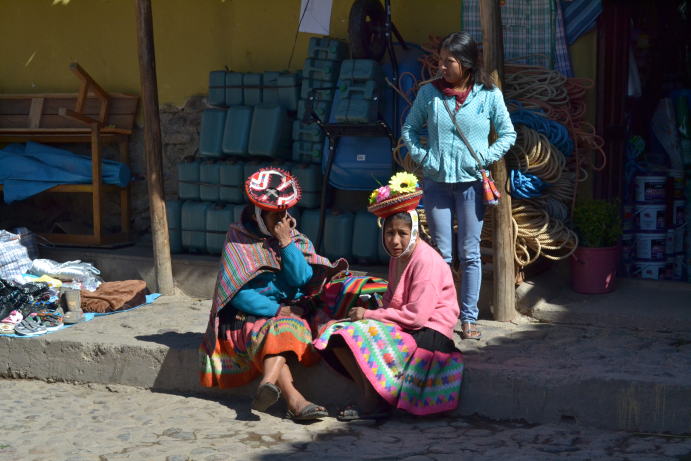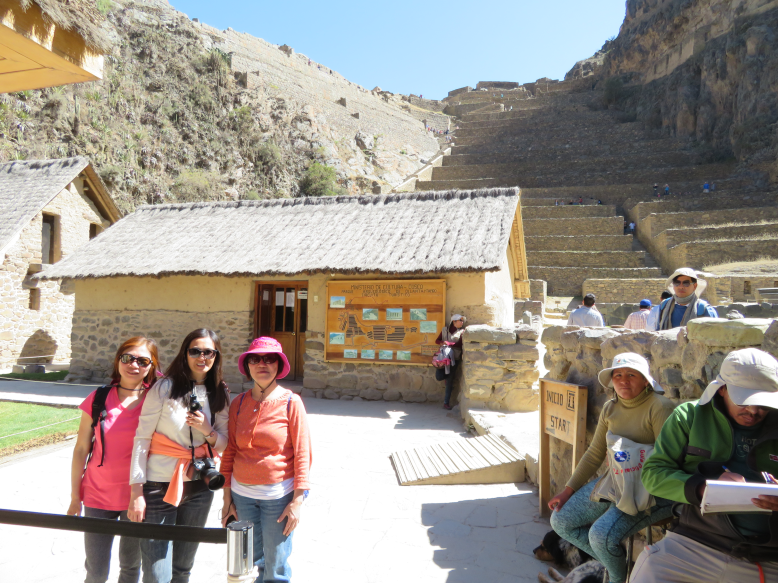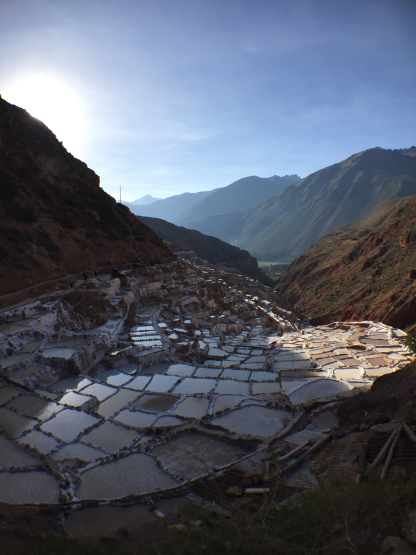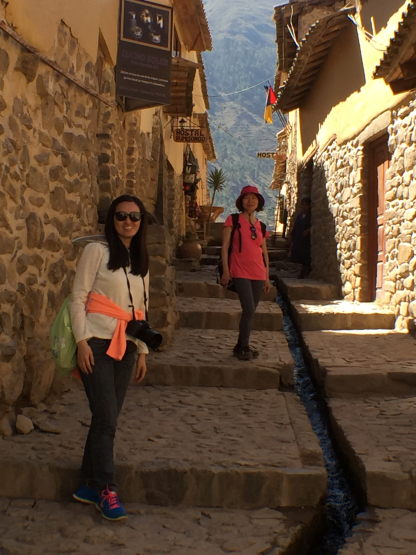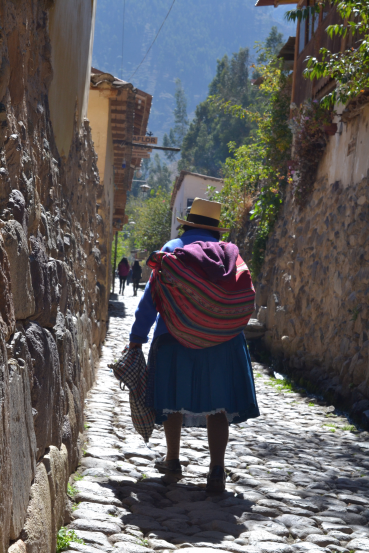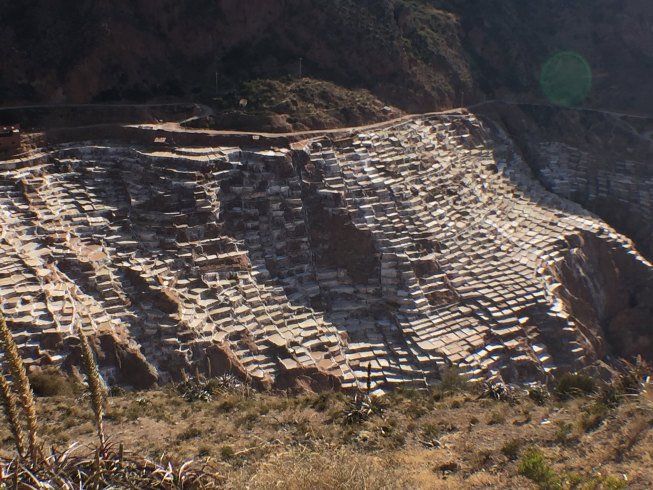 500+ year olds Miras Salt mine
500+ year olds Miras Salt mine
Ever since I was first introduced to Bolivia's otherworldly sceneries by some globe trekkers I met in Ushuaia, Argentina in Jan 2015, the desire to visit this beautiful country has been growing in my heart. No matter how I planned things simply were not aligned for me to visit this country sooner until now.
Planning this trip is anything but easy, especially after reading pages of travelers' horror bus experiences in Bolivia. Stories included accidents caused by drunken bus drivers, traveling in buses with no heat under biting chilly altiplano winter temperature, onboard toilet door being locked by bus driver to avoid cleaning afterward and etc. Still none of these can deter me from seeing this thinly visited country.
Visiting Machu Picchu was an add-on due to its proximity to Bolivia and also its rich and mysterious history associated with the inca tribe.
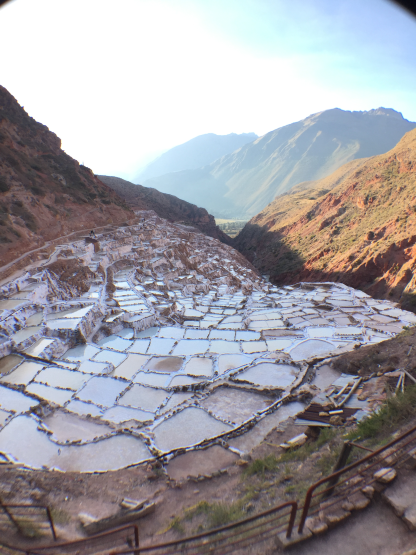 Miras Salt mine
Miras Salt mine
Our original plan was, enroute to ollantaytambo, to visit some ruin sites at Chinchero, Muray, and salt de Salina maras.
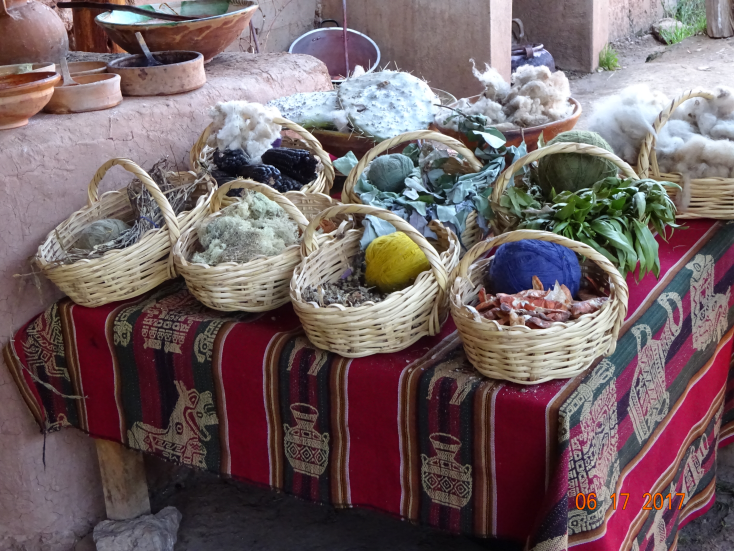 The texttile shop where we stopped for hours due to AMS
The texttile shop where we stopped for hours due to AMS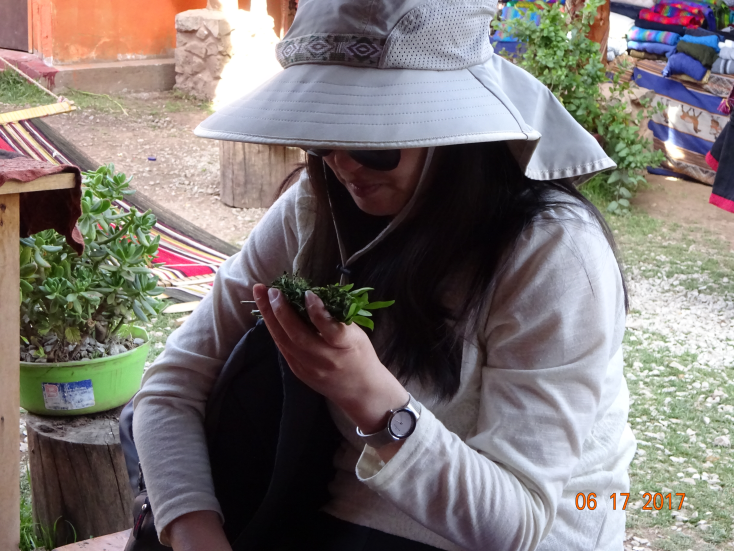 The herbs in my hand helped me from passing out
The herbs in my hand helped me from passing out
Unfortunately the high altitude combined with the mountainous windy road made a perfect recipe for an upset stomach and headache, if not worse Altitude Mountainous Sickness (AMS) conditions. My two travel companion had headache and upset stomach 1/4 into the 105 minutes journey and began vomiting. I was feeling normal until I got out of the car to a textile place for viewing how the local people ....in chinchero, 1/2 of the journey. I was in my feet with my 6-pound backpack. The thinner air caused me to breath heavier. I started to feel unwell, and as soon as I drank the tea served by the local lady, I felt worse and as if the power had been sapped from my body. My hands were shaky and white, no sign of blood color. My past experience for being passed out at twin peak in Colorado Springs reminded me to be calmed and breath steadily. Seeing our facial expressions, the ladies at the textile place quickly plucked some herbs from their herbal plants and put them in our hands. She then had us rubbed against the alcohol she poured into the plants and had us smelt them as hard as possible. Seriously I almost instantaneously felt better and my energy slowly restored.
We didn't buy any of their handmade textile works although they wished we would. Instead we "tipped" them for their kindness.
 Miras Salt mine
Miras Salt mine
We skipped other ruin sites but managed to visit the Salina de Maras before reaching our hostel in Ollantaytambo around 6pm.
One of the AMS symptoms was the absence/lack of appetite. By this time my stomach began acting up and headache slowly set in. Knew we should eat but afraid our stomach might reject the food. Even so, we quickly ordered food, soups and trout. We hardly finished 1/3 of the trout. For me, the food made my heart pound harder and me feel weaker.
The hot shower eased some of our headache. We all were in bed by 9pm.
Such was our first night in Ollantaytambo, Peru.
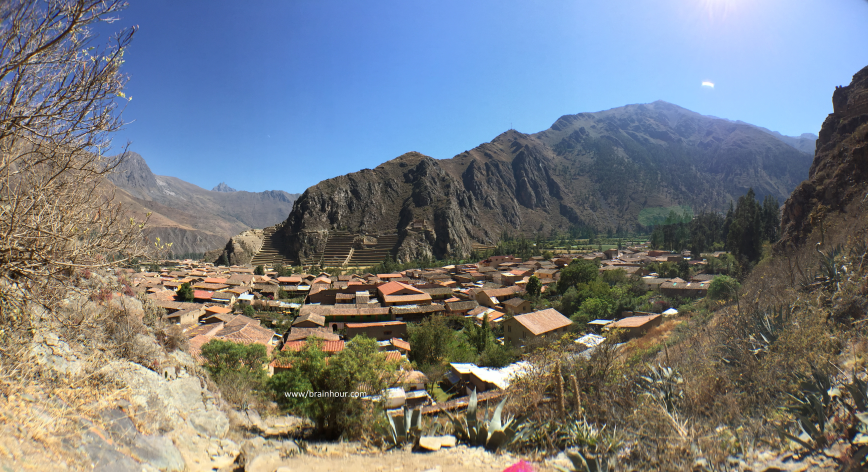 Ollantaytambo- our first stop before MP
Ollantaytambo- our first stop before MP
June 18
Our AMS condition improved after some sleep. Instead of going to Pisac, we stayed put exploring this ancient city of Ollantaytambo. In some way, what medieval city is to the European countries, ollantaytambo is to the Peru. Paved with cobblestone throughout the city, it is a rather small town, surrounded by mountains, and famous for its well-preserved impressive Incan fortress, probably rank number two in Sacred Valley after Machu Picchu.
The host/owner of the hostel was waiting in the kitchen to prepare breakfast for his tenants. We had hot scramble eggs, toasted round bread, freshly squeezed juice, and fruits. Simple, healthy and delicious. He recommended us to drink coca leave mixed with another herb to ease our upset stomach. We took heed.
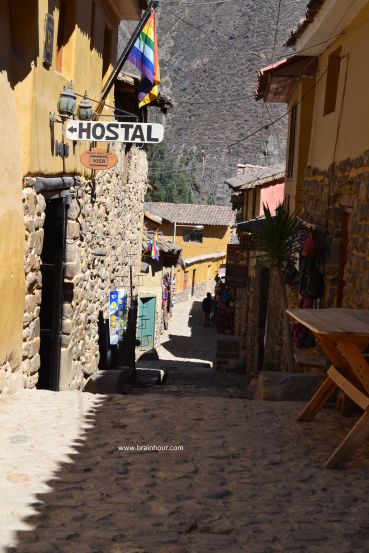 beautiful narrow streets
beautiful narrow streets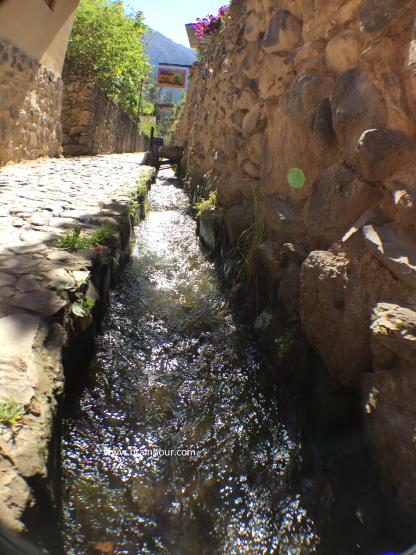 A very serene and peaceful town.
A very serene and peaceful town.
Only the main street is wide enough for vehicles, the rest of the narrow streets are for tuk-tuk and/or pedestrians. Houses are built of stones on somewhat hilly slope. One could stroll on these alleys freely.
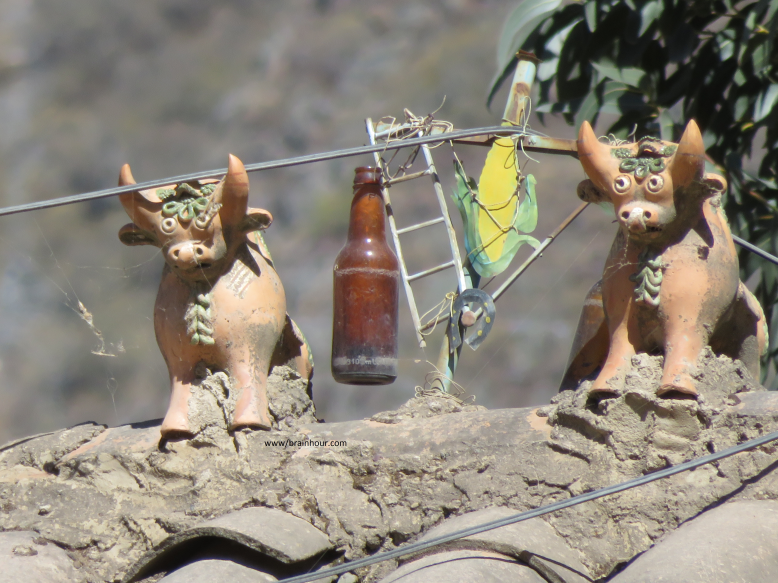 These statues are on rooftop of nearly all houses, and local people believe they can provide protection.
These statues are on rooftop of nearly all houses, and local people believe they can provide protection.
Peruvians seem to be dog lovers; dogs are unleashed and run freely everywhere, including the streets. The drivers are kind and would honk to caution them from being run over.
Although June is considered winter in Peru, the leaves of the trees are still as green as it can be.
The altiplano sun in winter is no different from the merciless sun in Chicago summer.
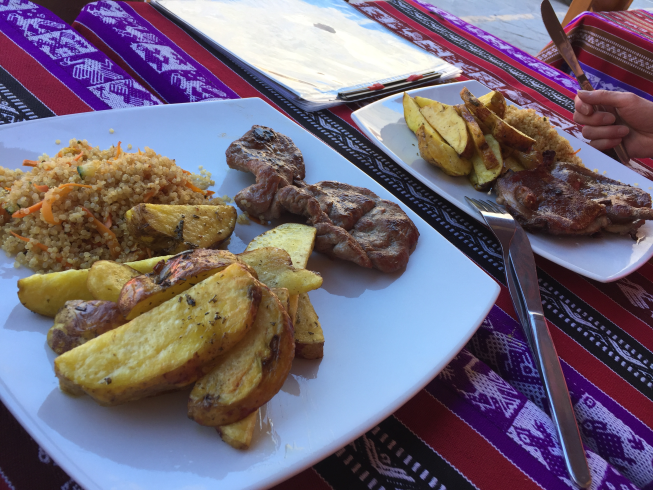 We enjoyed Guinea pig and alpaca meats for lunch at a restaurant facing the plaza, town center with the backdrop of mountains.
We enjoyed Guinea pig and alpaca meats for lunch at a restaurant facing the plaza, town center with the backdrop of mountains. Incan doors; i was rather obssessed with doors in this trip.
Incan doors; i was rather obssessed with doors in this trip.
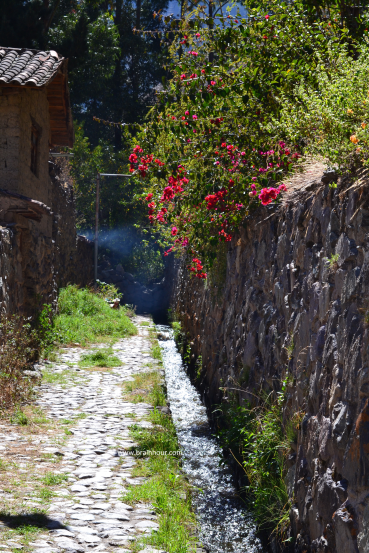

The indigenous people dressed themselves in striking colors. They tend to come close to the tourists to be in the photos and then ask for money for being in the photos. They also sell sourvenirs at early age. I might be wrong. I don't see the innoncence and naivety in them like I do in their counterparts in other countries. Life seems harder for them in some aspects.
At 4pm we headed to the train station for Machu Picchu. Here we come...
blog comments powered by Disqus
